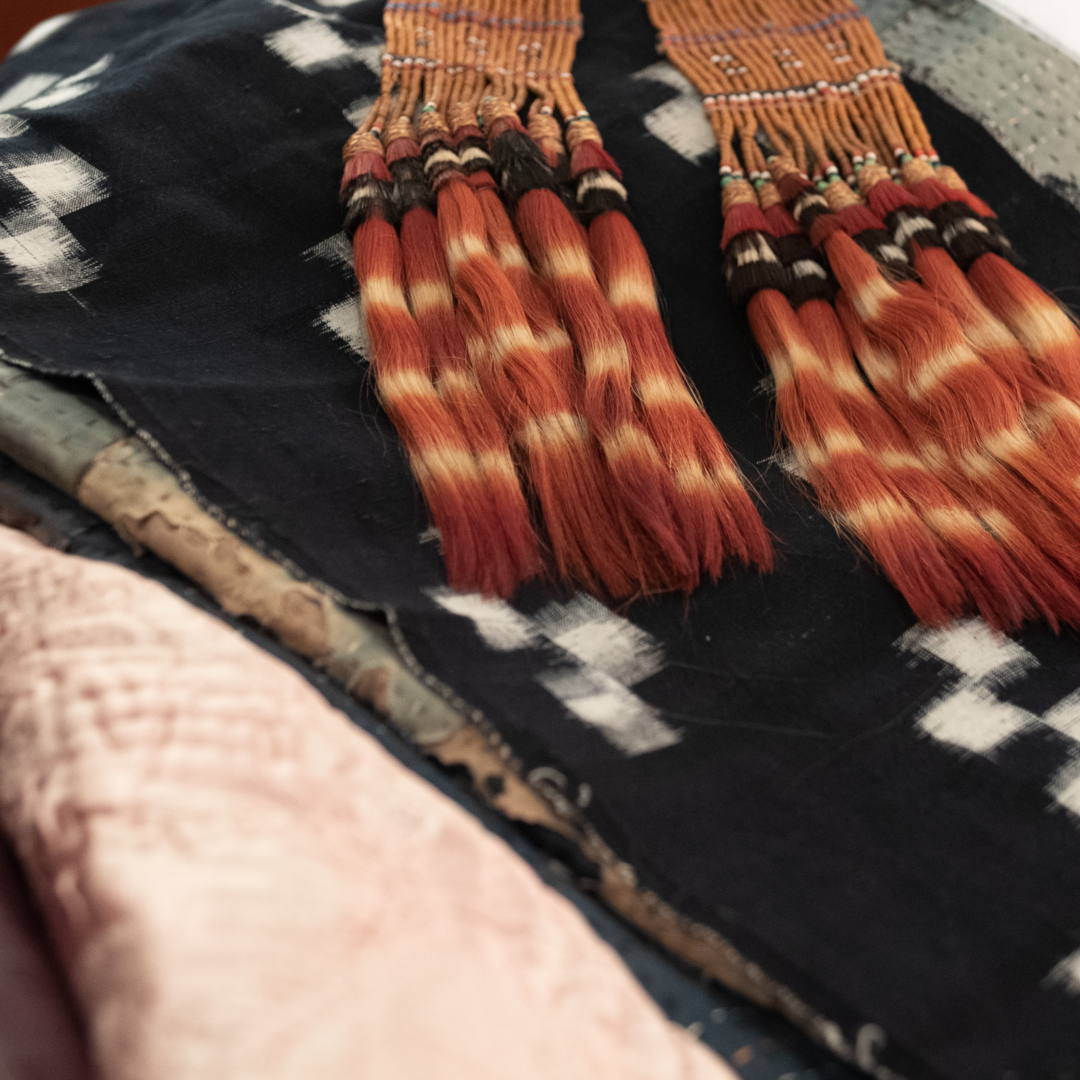Inside SAM’s World of Compelling Cloth: How Ikat is Made

By now, you’ve likely seen or heard the word ‘ikat.’ From advertisements on the side of King County Metro buses to the gorgeous graphic gracing SAM’s lightbox in downtown Seattle, the word is everywhere. But what is an ‘ikat’ and how is it made? In this first stop as part of the smartphone tour of Ikat: A World of Compelling Cloth at SAM, Ramzy Lakos, the museum’s educator for digital learning, gives an overview of this time-honored textile and lays out the many intricate steps necessary in creating an authentic ikat.
Listen to the recording above to familiarize yourself with the subject at the focus of this limited-run exhibition at SAM and explore all seven stops of the exhibition’s free audio tour on our SoundCloud.
How to Make an Ikat
RAMZY LAKOS: Let’s talk about how ikat textiles are made. Techniques, materials, and tools vary all over the world, but we’ll cover some of the basic details in this audio stop.
The process that defines ikat textiles is known as resist dyeing, which requires binding threads with a material that repels liquid dye. Traditionally, materials like palm and banana fiber were used to bind the thread, but plastic is [becoming] increasingly common. After they are tied off, the bundles of thread are submerged in liquid dye. Those areas that are tied off will remain the color of the original thread, and the exposed patches of thread slowly take on the new color. The longer the threads soak in the dye, the deeper and more vibrant the final result. By tying off different sections of thread for each new color, the dyer can create increasingly complex multicolored patterns.
Dyes are traditionally made using organic materials. A few examples include indigo leaves, ginger root, onion and pomegranate skins, and cochineal insects. However, synthetic dyes have been popular since the late 19th century.
After the dyeing process is complete, the weaving process begins. To create a textile, a weaver takes the dyed threads and stretches them over a frame called a loom. The threads stretched over the loom are known as the warp. To create a solid cloth, the weaver passes a thread side to side, over and under the taught warp threads—this is known as the weft. At this stage, the weaver takes care to match each thread to the next so the design lines up correctly.
There are a few kinds of ikat. The most common is known as a single warp ikat, where only the vertical threads are resist-dyed. Less common and more challenging is single weft ikat, where the horizontal threads are resist-dyed. The final and most complex category is double ikat, where both the warp and the weft threads are resist dyed, so two different designs have to be lined up on the loom.
The visual signature of an ikat is a movement at the edges of a design that result from the slight shifts of individual yarns during the dyeing and weaving process. All over the world, there are regions where ikat was discovered and cultivated as a unique way to embed images in cloth.
– Lily Hansen, SAM Marketing Content Creator
Photo: L. Fried.